The worst cruiser in the world or how not to build ships
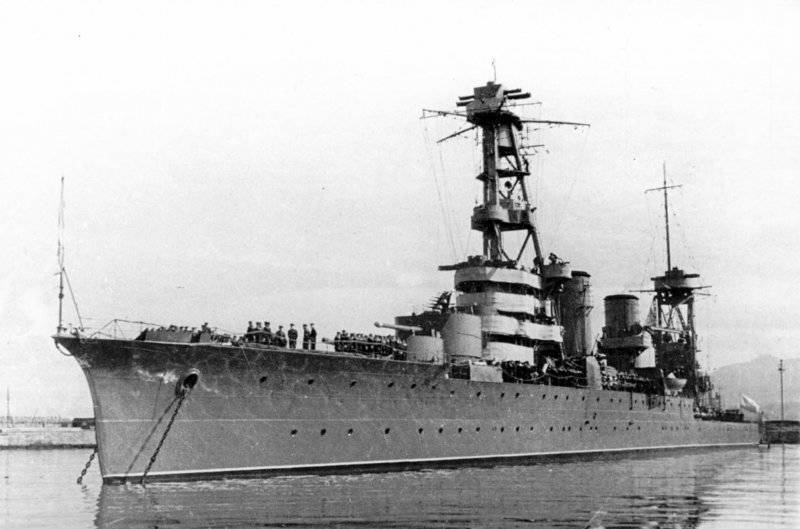
In general, this material is an ode to the wonderful, best crew of the Black Sea fleet in the Great Patriotic War. Indeed, there is no exaggeration here: to do such things on such a dull trough, which was the under-cruiser "Red Caucasus" - this is generally beyond understanding often.
The thesis is this: the crew of the guards cruiser Krasny Kavkaz is a very well trained, both technically and morally, motivated and absolutely reckless crew, which any great naval commander of any state would consider it an honor to have.
Arguments? Elementary! To work miracles with a lightly armed landing barge at your disposal is a "god" level.
Let's start with numbers
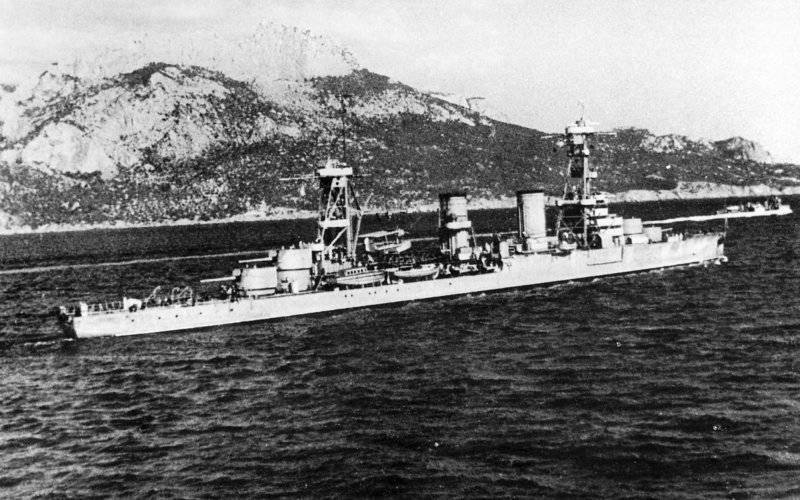
From 1941 to 1944, before the start of the overhaul, the "Red Caucasus" made 64 military campaigns, in which it transported more than 25 people and more than 000 pieces of military equipment. Repelled about 400 air attacks. Yes, something else was fired at and presumably hit somewhere, but we will leave that behind the scenes for now.
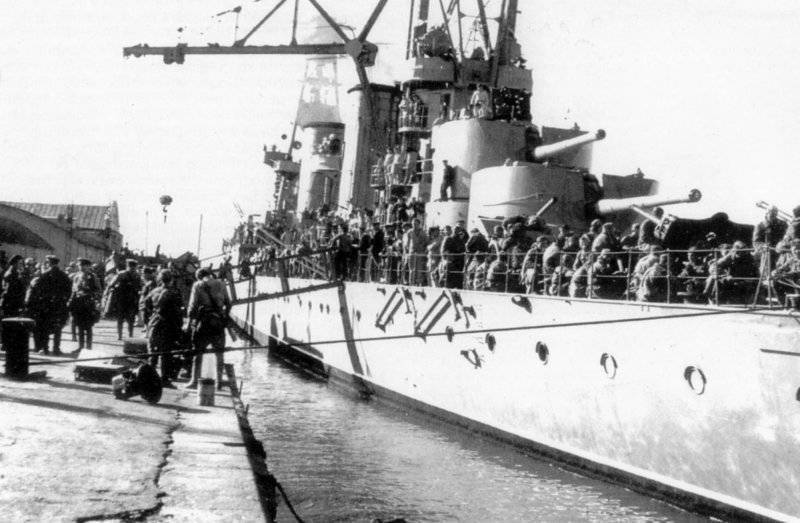
25 thousand people. These are 20 infantry regiments. With small arms, ammunition and so on. Machine guns, regimental cannons and vehicles (see 400+ vehicles). Plus, these 20 regiments were not always landed during the transfer of troops, but also in landing operations, when everything that was at hand, from company mines to heavy howitzer shells, flew into the landing and landing ships. And it flew.
Only the first two combat exits, on June 23 and 24, 1941, were not associated with the movement of people and equipment: the cruiser laid mines. From whom and why is a separate question, but I did. All other operations were, as they would say now, logistical.
It can be said that the conversion of the Svetlana-class cruiser resulted in a very successful landing barge. Well, or an assault landing ship, in modern terms. It is quite relative to shock, but we will talk about this a little lower.
In general, there is no sadder story in the world than the story of project No. 815.
Project No. 815 is a script for a horror film based on the metamorphosis of the light cruiser Admiral Lazarev into a certain cruiser Krasny Kavkaz. History a series of forced and unsuccessful decisions, because the sister ship and the lead ship of the Svetlana series, aka Profintern, aka Red Crimea, was simply completed according to the project (well, give or take, as always) and came out much more sane by ship: I was faster, went further, we just keep silent about weapons.
If these two ships met in an artillery duel, I would not bet on the Krasny Kavkaz. Not only was 15 130mm barrels against 4 180mm guns a lot, there were still a lot of nuances, which even nullified the theoretical advantage of super-long-range 180mm guns.
But let's go in order. What was the main problem of the "Red Caucasus" - it stood for too long waiting for completion and flew into an era of change while standing.
In general, I wanted to finish building the ship according to a rather sane project: for the installation of eight 203-mm guns, which were removed from decommissioned Russian battleships. It turned out to be a kind of "light heavyweight", but the division into light and heavy cruisers was still ahead, therefore we are silent.
The evil genius of our fool from the army and navy of the first red marshal Tukhachevsky intervened. It was he (or one of his specialists) who came up with the idea of building a cruiser-sniper with artillery capable of firing at long distances.
It and besides this, many mistakes were made in the completion of the ship, caused by the lack of a unified management of the processes. Well, the eternal desire to shove everything that is possible into the existing displacement and a little more than that. However, it was a common practice of that time, and not only here.
Replace 15 130 mm shield guns with 8 shield guns, but 203 mm is a feasible project. But when instead of 203-mm guns it was decided to put 5 180-mm turret guns, problems began. One tower had to be abandoned, the cruiser "did not pull" 5 towers weighing 120 tons each, and two towers were supposed to have barbettes weighing about 60 tons each. And each tower, in addition to guns and armor, should also have rotation mechanisms, ammunition supply elevators, an artillery cellar ...
And they also wanted to leave part of the 130-mm guns as an auxiliary caliber ...
In general, it did not take off. One tower from the project had to be removed, and 130-mm guns went there too. It felt better, but still, the two towers on the nose gave a very noticeable overload, which was expressed in the trim on the nose.
The Germans in their "Deutschlands" in a similar situation simply screwed a new nose. Longer and so solved the problem. But in our case, the length of the "Red Caucasus" was already 166 meters (at the battleship "Sevastopol" - 181 meters for comparison), and the number of docks for the repair of long ships was very small. And therefore, it was decided to eliminate problems as they come, that is, sequentially.
They changed the shape of the forecastle, simply and unpretentiously cutting down the height of the tank superstructure from 3,25 meters to 2,25. per meter. The sides were given collapse to reduce the flooding of the forecastle. Did not help.
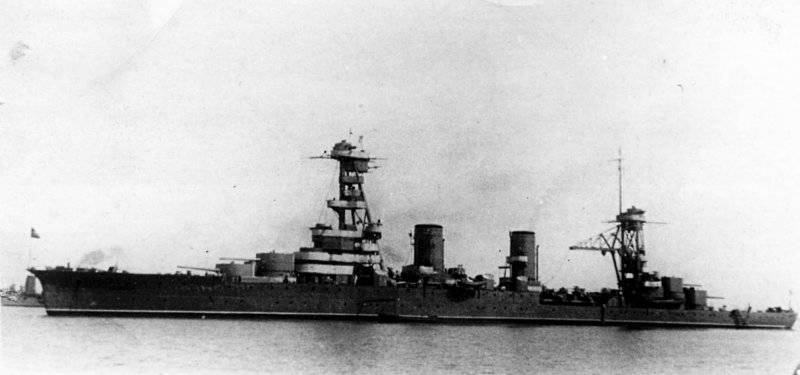
Then they began to move towards the stern everything that was behind the second tower. The bridge, foremast, conning tower and central post were shifted towards the stern.
The displacement of this entire complex of "buildings" entailed the elimination of one boiler room in the hold. That is, minus 4 boilers. It was not possible to compensate for the absence of four boilers and, accordingly, steam for turbines. In general, boilers should be of a mixed type, coal-oil, but it was decided to abandon coal-fired boilers and leave only oil ones.
In general, yes, more progressively, but the steam problem was not solved. And in fact, the course of the "Red Caucasus" was less than that of the "Red Crimea" and "Chervona Ukraine" by 4-5 knots.
Next, we decided to remove the Fram tanks - pitching dampers. Yes, the Black Sea is not famous for storms, but nevertheless, sedatives when shooting are very useful.
Lightened the mast. I mean, they made it smaller and lighter.
Then, in the leadership of the Navy, someone came up with a bright idea that ultra-long-range guns needed to be adjusted somehow! In general, it is logical, 40 km of distance is sometimes not visible from a shortened mast. And, of course, there were no radars then.
We decided to install the purchased Heinkel catapults and place the KOR-1 aircraft. "Red Caucasus" received one catapult and two aircraft. But this also required a place, plus a place for the aviation industry!
We started to search. Part of the stern superstructure was removed, the stern turbogenerators were moved to the tiller compartment, and a new place was found for provision storerooms.
The main mast also moved aft.
In the end, you understand that some other ship has turned out. Obviously not Svetlana anymore. Reservation, however, remains the same. Two armored belts, upper 25 mm and lower 75 mm, armored deck and traverses 20 mm, towers and barbettes - 25 mm.
The cruiser's displacement increased from 7 to 600 tons. And while the main armament consisted of four 9-mm guns. For comparison, with the same displacement, the Japanese cruisers Aoba and Furutaka carried 030 180-mm guns each.
And if you remember (pulling slightly) the heavy cruisers of the Deutschland type, in which the displacement went over 10 tons, but the main caliber of which consisted of 600 6-mm guns ...
In general, it turned out somewhat so-so.

Now let's talk about the tools more closely.
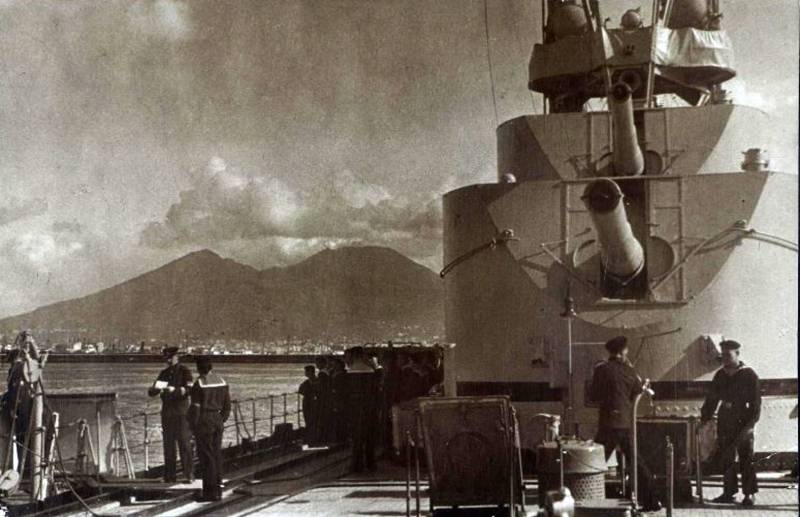
Why and where the 180-mm caliber came from is not so important now, the French before World War II dabbled in exotic 138, 164 and 194 mm. Rearranged 203 mm gun? Yes, there was such a task back in 1926, but in general it is not so important where the chief designer of the Bolshevik plant, K.K., Chernyavsky, took the caliber numbers from. It is important that the 180-mm gun re-barreled in this way was tested at the Rzhev training ground, but the idea of a base for 203-mm barrels was discarded and it was decided to make 180-mm barrels anew. And the shells for them were already produced.
The gun was named B-1-K (with a Vickers wedge bolt). A lot of words were said about the new gun. The first Soviet gun. New generation weapon. Unique combat characteristics that surpassed world analogues (well, yes, one step to "having no analogues in the world", but in general the finale is just that). With a projectile mass of 97,5 kg and an initial speed of 920 m/s, the maximum firing range of the gun reached more than 40 km (225 cables). High rate of fire and so on.
Of the shortcomings, separate loading was noted, which significantly reduced the rate of fire. Moreover, one charge was in the sleeve, and the second - in the cap. Not the most practical layout.
And, as you understand, this was far from the only drawback of the gun.
The main drawback was simply the sad resource of the trunk itself. The gun had a simply fantastic limit of 70 shots with a full (sleeve + cap) charge, after which it was recommended to replace the barrel.
Of course, guns on ships do not always shoot at maximum distances, the ammunition load of each gun on the Krasny Kavkaz ranged from 175 to 196 shells, depending on the load, this is the amount that could be fired with a half charge. And then change the barrel anyway.
And yes, there was no barrel purge system.
In fact, this meant that the ballistics of guns with monobloc barrels changed significantly even in the process of one firing. Paying for the ability to shoot at 40 km ...
In general, everything is very strange. An image of a sort of sniper cruiser is drawn, which easily shoots enemy ships from great distances. Yes, in this case, he does not need a large number of volleys of ultra-precise and ultra-long-range guns, everything is decided by accuracy.
Fire control devices provide accuracy. Could something like this, ultra-modern, be installed on a Soviet ship in the 20-30s of the last century? Of course not. The country was under regular sanctions, so the fire control system was quite simple.
It got to the point that the towers did not have their own rangefinders and sights. All information came from two command and rangefinder posts on the masts. The information converged in the central fire control post, where it was processed using semi-automatic electromechanical devices. And from there, information in the form of vertical and horizontal guidance angles went to the towers.
That is, the failure of one of the links in this chain (KDP or PUAO) made the guns fall silent.
It turned out to be a sniper cruiser, but ... A comparison comes to mind with a fighter who has an SVD with a conventional rear sight. The rifle seems to be a sniper and long-range rifle, but there is zero sense in this. So the B-1-K guns, which fired at 40 km, were corrected with the help of rangefinder signalers, who would be guided by splashes from falling shells.
No, it's normal at sea. The splash gave an understanding of how the enemy ship was in the "fork". When firing at ground targets, often hidden by terrain folds, it all came down to shooting "somewhere in the direction of the enemy." In general, adjusting guns that fired at very long distances, and even with shells that did not have a large charge (an armor-piercing shell weighing 95 kg carried only 2 kg of explosives) is not an easy task.
In general, the naval command understood that the fighter from the "Red Caucasus" was still the same ... But they actively drove the ship on various representative visits. That is, the cruiser got into political service, with which he coped quite well.
In 1938-40, the ship underwent modernization. The navy really wanted to re-equip the ship, throwing out all the outdated (and it was just all outdated) artillery equipment in a landfill. But the People's Commissariat of the shipbuilding industry decided that "it will do," replacing only auxiliary artillery.
The cruiser received six (3 twins) 100 mm Skoda universal guns, which were good in the First World War, and four semi-automatic 45 mm 21K anti-aircraft guns.
And in this form, the "Red Caucasus" went to war
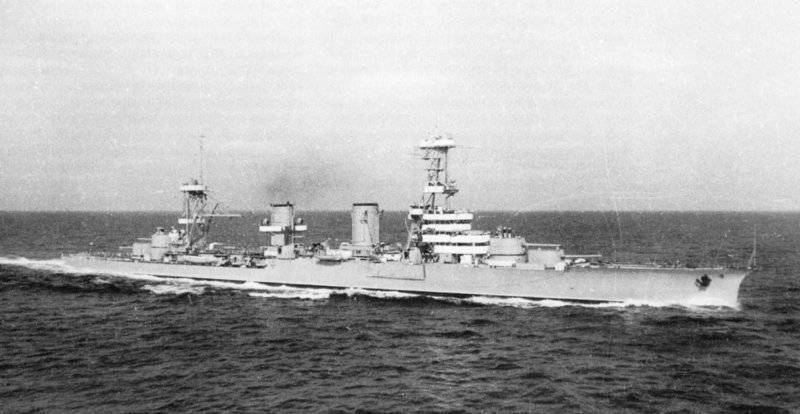
Before the war, in 1940, according to the report of Admiral Alafuzov, the ship was unfit for use as a training ship due to the fact that its artillery was in poor condition. It is possible that it was so, but the ship paid for itself in the political arena. At least, the construction by the Italians in Leningrad of a line for the production of liners is already quite a result.
And, in fact, what did the Black Sea Fleet have in terms of this ship?
In the "minuses": there is artillery of the Civil Code, but you can’t really use it, because the resource consumption of barrels. There is practically no anti-aircraft artillery, because this is a Soviet ship, we were disgusting with this throughout the war. Torpedo armament and equipment for minelaying on such a chest was completely unnecessary, besides, there was no one to lay mines. Not very impressive speed and maneuverability.
In the "pros": well trained and trained crew. Several years of trips to foreign countries, where to drop the prestige of the country was, if not like death, then definitely threatened everyone with trouble - this is normal. Plus, I would say that the crew with the commanders was lucky, and A. M. Gushchin, and V. N. Eroshenko were among those who were not afraid to make decisions, and made them thinking. In short, competent and not cowardly officers.
The case when one plus outweighed a bunch of minuses. Can't shoot the main one? Okay, let's use a helper. Six 100-mm barrels (although in order to use all six, you need to rake the ship in a certain way) is better than nothing anyway. They hit not at 40 km, but at 15? So landing operations are not a war at sea, on land there is relief, dust, smoke - first consider something beyond your nose.
Therefore, the cruiser became a landing barge. Yes, 180-mm guns were used, but really, very carefully. From 12 to 27 shots. The first combat shooting happened on September 12, 1941, near Odessa. Fired 27 rounds towards the enemy. The results... presumably.
But no one was going to save the resource of 100-mm guns, so the Skodas hit with all their heart, and the cost of shells was completely different. The cruiser's calculations gave from 200 to 400 shots per operation. They shot, of course, not at 40 km, but it was not much needed either.
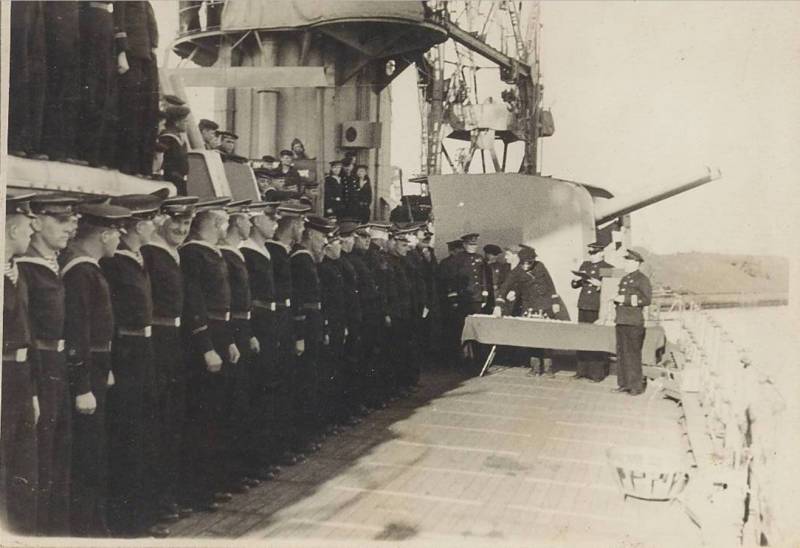
The peak for the "Red Caucasus" was participation in the Kerch-Feodosiya landing operation. On December 29, 1941, having taken on board 1853 paratroopers, a battery of six 76-mm guns, 16 vehicles, ammunition and food, the Krasny Kavkaz left Novorossiysk as part of a detachment of ships and entered Feodosia Bay on the morning of December 30.
As part of the operation, the cruiser fired 4 main caliber rounds, firing 86 180-mm shells. 100 mm guns fired over 700 rounds.
The idea of the operation was very dashing: the cruiser, firing from all barrels, bursts into the bay, suppresses German batteries and moored to berth No. 3 of the Wide Mole, where it began landing and unloading equipment. Suppressed enemy artillery means do not interfere with this.
In fact, everything turned out to be more complicated. The artillery raid, for which the cruiser fired 26 main battery shells, to put it mildly, had no results. It was not possible to moor on the first attempt (and on the second one too). Only after two hours of circling around the harbor, the "Red Caucasus" was able to moor to the pier. On the third try.
For two hours, everything that could shoot from the side of the Germans, fired at a really large ship moving at low speed around the bay, hitting it with all its heart. And given the good training of the German artillerymen, it hit. The watch log is a witness to this:
5:08 - hit by two mortar mines;
5:15 - hit by a projectile, presumably 88 mm. No damage;
5:21 - a projectile, presumably with a caliber of 150 mm, pierces the frontal armor of the 2nd main turret and explodes inside. The calculation dies in full force, a fire starts. Emergency belt teams put out the fire and after 1,5 hours the tower is combat-ready again;
5:35 - a projectile, presumably 105-mm, and two mortar mines burst on the bridge. Most of the people on the bridge die;
5:45 - the shell exploded in the hull in the area of the 83rd frame;
7:07 - hit on the left side in the area of the 50th frame;
7:17 - another shell hit in the area of the 50th frame;
7:30 - hit in the area of the 60th frame;
7:31 - presumably a 105-mm projectile hit the conning tower, the armor was not pierced;
7:35 - hit in the area of 42 frames;
7:39 - three shells hit the tank superstructure.
8:08 - having completed the landing (all 1 people were on the shore), but without unloading the equipment, the cruiser began a maneuver to enter the roadstead. Very timely, because at 583:9 German planes arrived, which during the day made 25 attacks on the ship. The team was on top and the Germans failed to get into the ship.
On December 31, during the day, the crew of the Krasny Kavkaz unloaded equipment while in the roadstead of Feodosia. Artillery continued to work on the Germans on the shore, supporting the actions of the paratroopers.
On January 1, the cruiser sets course for Novorossiysk.

During the landing in the crew of the "Red Caucasus", 27 people died, 66 were injured. In total, the cruiser received 12 shell and 5 mine hits, 8 fires, 7 holes in the hull, and internal mechanisms were damaged.
January 4, 1942, with 1200 people, equipment and ammunition, the "Red Caucasus" again arrived in Feodosia. Not even repaired, but only literally, putting patches. It was not possible to unload everything before dawn, and in the morning the ship was attacked by a German aviation. The cruiser standing at the pier turned out to be an easy target and the Luftwaffe pilots were able to lay 4 bombs at the side of the ship.
250-kg bombs made 3 large holes in the stern, through which water gushed. However, the crew coped with the flow of water, set in motion and brought the ship to the roadstead. There, the "Red Caucasus" was attacked by a group of Ju-88s with 500-kg bombs, one of which exploded at the aft end. The right propeller was torn off, the left propeller bracket was bent, and the steering jammed. The flow of water began again, with which the ship eventually took about 1700 tons.
Not a single memoir will convey what befell the crew, I will not even try. For a day, the ship crawled 300 kilometers from Feodosia to Tuapse, but in the end, in the conditions of a storm that broke out, the Red Caucasus was able to restore speed and control and reach Tuapse. Bad weather played into the hands of the sailors, the enemy planes did not bother.
The repair of the ship in the conditions that the docks for ships of this class remained in Sevastopol is a separate heroic story.
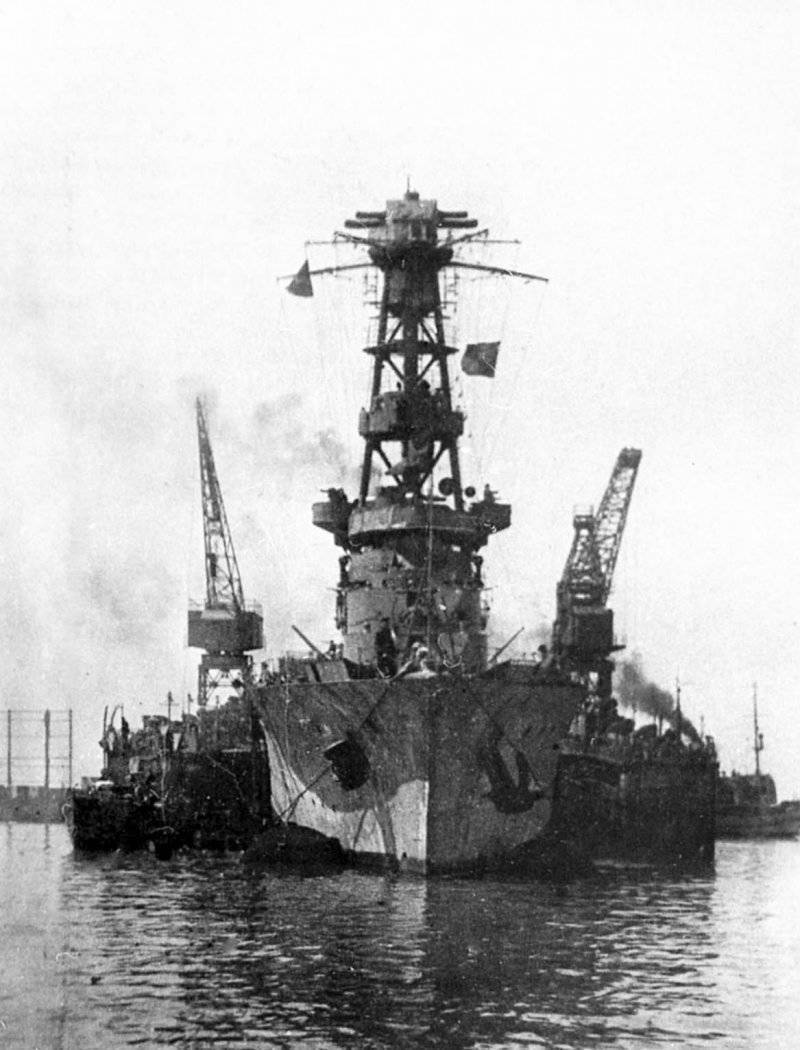
That's really - if you want to live - you won't get so upset. I don’t know if there were still cases in world practice when a dock designed for 9 tons was pulled onto a ship with a displacement of 000 tons, but ours were able to. And they repaired the ship.
Based on the results of military activity, once again: 14 thousand miles on campaigns, 25 thousand soldiers there, wounded servicemen and civilians from Odessa and Sevastopol back, more than 400 pieces of guns, mortars, trucks, 2 tons of ammunition - this is a very weighty contribution to the common cause.
But the question arises: is it a cruising business at all - to carry ammunition and land troops?
Of course not. The business of the cruiser is to provide landings, escort transports, protecting them from enemy ships and aircraft, suppress coastal batteries with the fire of their guns, and so on.
But for this, the "Red Caucasus" was not adapted at all. It can, of course, be said with certainty that he had no rivals at sea, and not lie at all. But on land, there were more than enough of them. Well, the ship is not the best artillery platform for firing at dynamic targets on the coast, but nonetheless.
The fight against aircraft is not about our ships at all. Air defense was the weakest side of the Soviet ships from the battleship to the minesweeper. The ancient 100-mm universals and 45-mm semi-autos are more to indicate the "repulse of the attack" of enemy aircraft. Something similar to the air defense at the "Red Caucasus" appeared after the overhaul, but there was no longer any sense, the ship began to be protected, according to Stalin's directive. And there was no longer any need for landing operations, the ground army coped on its own.
So what kind of cruiser was built with us?
And he was not a cruiser. In fact, the Krasny Kavkaz is an experimental vessel built to test the latest 180-mm B-1-K artillery system. And except for the "Red Caucasus", the B-1-K guns were no longer used on any ship. Precisely because the operation of the B-1-K revealed many problems. The pursuit of a record range turned out to be, like many similar projects, an empty business. But such were the times, there is nothing to condemn here.
And instead of B-1-K, completely different guns, B-026-P, went on the cruisers of project 026 and 1-bis. It must be emphasized in bold, these are COMPLETELY different guns, they even had different shells with B-1-K. We can say that the 180-mm gun was created anew: it already had liners from the Italians from Ansaldo, the barrel length was reduced by 3 calibers, that is, by 0,54 meters, which completely changed the ballistics of the projectile. They deepened the rifling and - lo and behold! - barrel resource increased to 300 shots. And plus a piston valve.
Yes, the firing range instead of 40-41 km was 36-37 km, but there was no need to worry about every shot. It's worth a lot. And in any case, a cruiser firing a 180-mm projectile weighing about 97 kg is not like a battleship sending almost half a ton of ingots at the same distance.
And now it's time to ask a question: the author, what did you want to convey in general?
Actually, everything I wanted to say, I said. Once again I paid tribute to the simply delightful crew of the Krasny Kavkaza and a few words about how it is customary for us to present information.
In fact, it doesn't make much difference what the ship was. What matters is what the crew could do with it. But you must admit, it’s one thing to read stories about a heroic cruiser that didn’t really have artillery, air defense, and which was used throughout the war as a landing barge, and quite another if we are talking about an experimental ship, which the “Red Caucasus” was.
In general, according to the letters of the Washington (first) treaty, the "Red Caucasus" is not a cruiser at all. Both in Washington and London in 1930 it was clearly spelled out: a ship with weapons FROM four guns caliber FROM 152 mm.
By the way, this gave rise to a very original class of ships: American Erie-class gunboats.
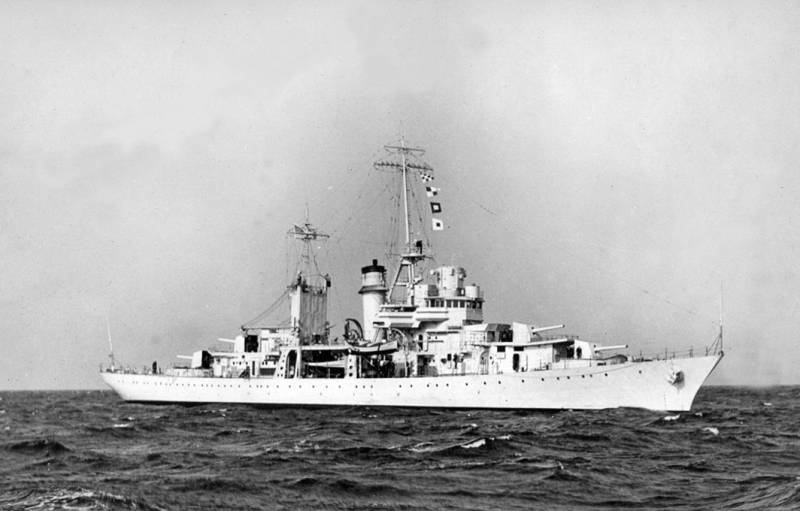
Ships with a displacement of 2000 tons (our destroyer "Seven" has a capacity of 1500 tons, if anything) and armed with four 152-mm guns. Plus four "Chicago pianos" (anti-aircraft machine 4 x 28 mm) and four "Oerlikon" 20 mm. In general, the project was very interesting, minus only in a frankly low speed (20 knots), but this was stated in the 1930 Agreement.
So how much the "Red Caucasus" was a cruiser at all, you can break feathers to this day.
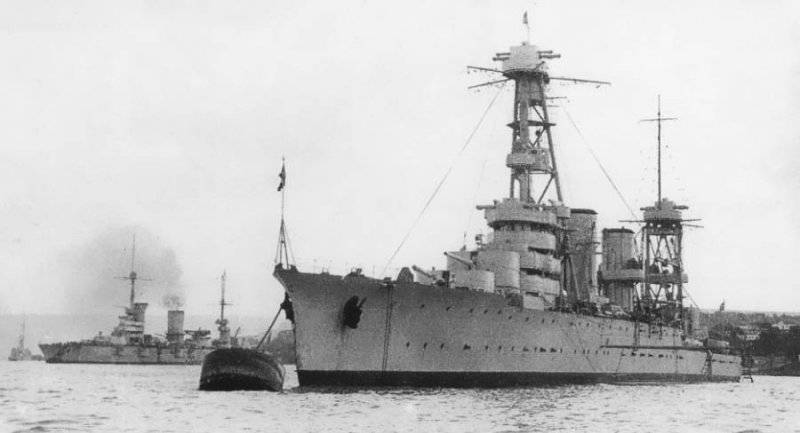
And it’s a completely different question that they took an experimental ship with a good crew and used it during the war. That is, the question is exclusively in the presentation of the material.
However, if you look at the "Red Caucasus" as a cruiser, this is definitely one of the worst and weakest cruisers of that time in all respects. And if, as on an experimental vessel, everything turned out well. And the armies helped, and the guns were tested.
But, of course, the history of the "Red Caucasus" is a story about how not to build ships. Or adjust. "On the knee" and in pursuit of meaningless records. Moreover, everything said is relevant today, moreover, it is more relevant than ever. With regard to all our exhibition "unparalleled ...", and therefore not appearing in the army, weapons.
History clearly goes in a spiral, only different conclusions are drawn at different times.
Information